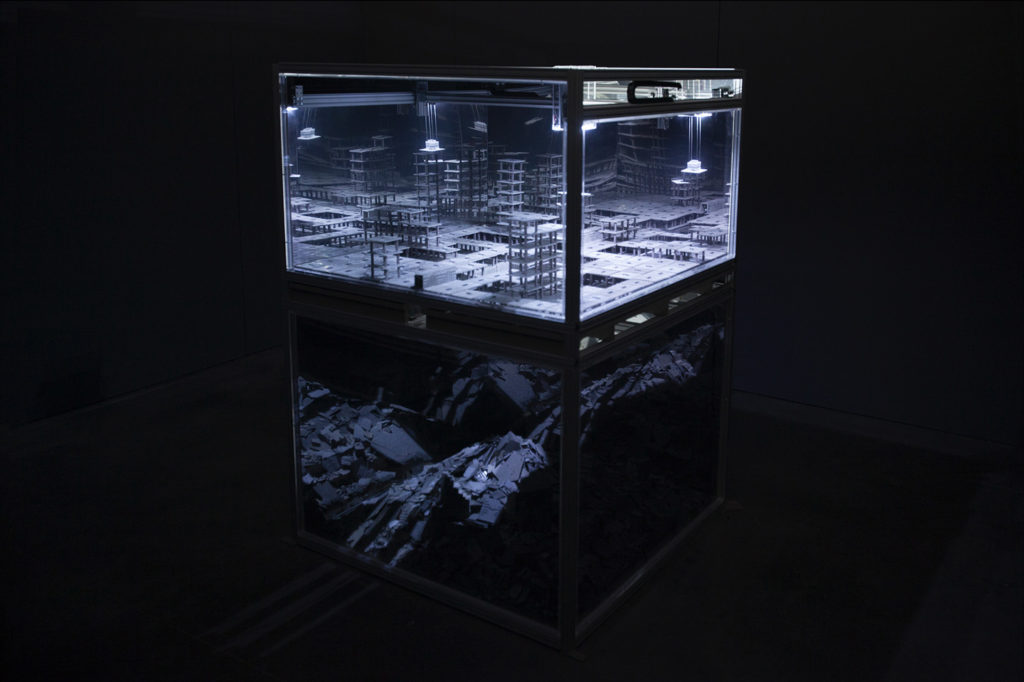Cénotaphes
Thomas Garnier (FR)

Installation architecturale automatisée
Aux quatre coins du monde poussent bâtiments, quartiers ou villes entières, construits à une vitesse ahurissante. Ces bâtiments et lieux n’ont aucune particularité commune, ils ne remplissent aucune fonction et sont abandonnés à la fin ou au moment même de leur érection. Ils passent directement du chantier à la ruine, leur faible durée de vie leur vaut alors plusieurs noms tels que “ghost cities”, “tofu buildings” ou tout simplement “ruines instantanées”. Inspiré par cet urbanisme délirant, l’artiste Thomas Garnier, également diplômé en architecture, livre ici une installation aussi effrayante que fascinante. Dans une cage en verre, des bâtiments de béton sont construits et déconstruits par un robot. Ce dernier récupère les pièces pour ériger et effacer en continu le paysage urbain. Sous la cage, on remarque des morceaux de béton brisés, ruines du chantier inachevé. Ce mythe de Sisyphe moderne, empreint d’un certain romantisme post-digital, s’inspire des nouvelles techniques de construction qui sont de plus en plus efficaces. Une nouvelle façon d’imaginer la ville devenue à la fois moderne et absurde.
Coproduction Le Fresnoy, studio national des arts contemporains.
Automated architectural installation
New buildings, districts or even entire towns are popping up all over the world, built at astonishing rate. These buildings and places have no common characteristics, fulfil no particular function and are abandoned as soon as they are completed, or sometimes during the construction phase. They go straight from being building sites to ruins, and their short lifespan earns them several nicknames, such as “ghost cities”, “tofu buildings” or quite simply “instant ruins”. Inspired by this outrageous urbanism, the artist Thomas Garnier, who is also a qualified architect, has come up with an installation that is as frightening as it is fascinating. In a glass case, concrete buildings are built and demolished by a robot which retrieves the pieces to construct and decimate the urban landscape over and over in an ongoing cycle. Under the case we can see broken pieces of concrete, ruins from the unfinished project. This myth of a modern-day Sisyphus manifests in some way a kind of post-digital romanticism, inspired by new construction techniques that are increasingly efficient. A whole new way of conceiving urban developments that have become both modern and absurd.
Coproduction Le Fresnoy, national studio of contemporary arts.